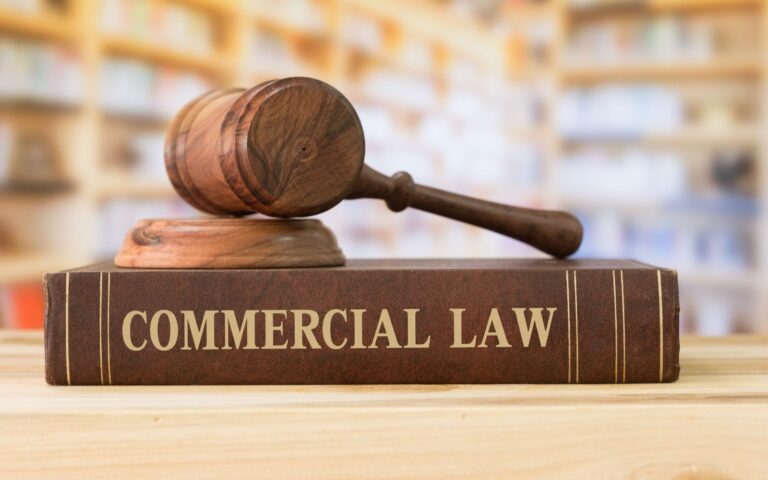Property rights are a fundamental concept in the field of law. Understanding property rights is essential for anyone dealing with real estate, personal belongings, or intellectual creations. This beginner’s guide aims to provide an overview of property law and its various aspects, helping individuals grasp the basics and navigate the legal landscape.
The Concept of Property Rights
Property rights refer to the legal ownership and control over a resource, allowing individuals to use, enjoy, and dispose of it as they see fit. These rights are crucial for maintaining social order and promoting economic growth. They provide individuals with security and incentivize investment and innovation.
Property rights encompass both tangible assets, such as land and personal possessions, and intangible assets, such as patents and copyrights. Protecting these rights ensures that individuals can benefit from their efforts and prevents unauthorized use or infringement by others.
Moreover, best property lawyers play a significant role in the property rights and overall functioning of a society. They provide a framework for individuals to establish and enforce contracts, resolve disputes, and engage in voluntary exchange. Without property rights, there would be no clear delineation of ownership, leading to chaos and inefficiency in economic transactions.
Furthermore, property rights contribute to the overall well-being of individuals and communities. When people have secure property rights, they are more likely to invest in their assets, maintain them, and improve their quality. This not only enhances the value of the property but also benefits the surrounding area by creating a more attractive and prosperous environment. Learn more about the role of insolvency lawyers in business turnaround strategies.

Types of Property Rights
There are various types of property rights recognized under the law, each with its own rules and regulations. The two primary categories are real property and personal property.
Real property refers to land and anything permanently attached to it, including buildings and natural resources. It includes both residential and commercial properties. Understanding real property rights is essential for homeowners, landlords, tenants, and anyone involved in real estate transactions.
Within the realm of real property, there are further subdivisions of property rights. These include fee simple ownership, which grants the owner the most extensive bundle of rights over the property, and easements, which allow others to use a portion of the property for specific purposes, such as access to a road or utility lines.
Personal property encompasses movable assets that individuals can own, such as vehicles, furniture, and personal belongings. These rights are crucial for anyone buying, selling, or leasing personal property.
Similar to real property, personal property rights have their own intricacies. For example, when it comes to intellectual property, individuals can obtain patents to protect their inventions, trademarks to safeguard their brand identity, and copyrights to secure their creative works.
Additionally, property rights extend beyond physical possessions and intellectual creations. They also encompass the rights of individuals to their own bodies and personal autonomy. This includes the right to make decisions about one’s own health, education, and lifestyle choices, free from unwarranted interference.
In conclusion, property rights are a fundamental aspect of a functioning society. They provide individuals with security, incentivize economic activity, and contribute to overall prosperity. Understanding the different types of property rights is essential for individuals to navigate the legal landscape and make informed decisions regarding their assets and personal autonomy.
Basics of Property Law
Historical Overview of Property Law
Property law has evolved over centuries, adapting to societal changes and economic developments. It derives its principles from common law, statutory law, and constitutional provisions. Studying the historical context of property law helps us understand how it has shaped our modern legal system.
In ancient times, property rights were often based on physical strength and conquest. However, as civilizations advanced, societies recognized the need for more organized and just systems. The Magna Carta in 1215 and subsequent legal developments laid the foundation for property rights as we know them today.
During the Middle Ages, property ownership was closely tied to feudalism. The feudal system granted land to lords in exchange for military service and other obligations. This hierarchical structure defined property rights and ownership, with the king at the top and peasants at the bottom.

The Renaissance period brought about significant changes in property law. The rise of individualism and the emergence of a merchant class led to a shift in the concept of property. Property rights became more closely associated with personal freedom and economic prosperity.
With the advent of the Industrial Revolution in the 18th century, property law faced new challenges. The rapid urbanization and industrialization brought about the need for regulations to ensure public safety and orderly development. Zoning and land use regulations were introduced to control the use of property and prevent overcrowding in cities.
In the 19th century, property law underwent further transformations with the recognition of adverse possession. This legal doctrine allowed individuals to acquire ownership of property through continuous and open possession, even if they were not the original owners. Adverse possession aimed to balance the interests of property owners with the need to encourage productive use of land.
Key Principles of Property Law
Property law is guided by several key principles that govern the ownership, use, and transfer of property. These principles include:
Exclusivity
Property owners have the exclusive right to use and control their property, while excluding others.
Transferability
Property can be bought, sold, or transferred, allowing individuals to profit from their ownership.
Adverse possession
In certain circumstances, someone can acquire ownership of property through continuous and open possession, even if they are not the original owners. Adverse possession laws vary across jurisdictions, but they generally require a specific period of possession, typically ranging from 5 to 20 years.
Zoning and land use regulations
Governments impose restrictions on how property can be used, ensuring public safety and orderly development. Zoning laws divide land into different zones, such as residential, commercial, and industrial, to regulate the type of activities allowed in each zone.
Eminent domain
Governments have the power to acquire private property for public use, provided they provide just compensation to the owner. Eminent domain is typically exercised in cases where the government needs the property for infrastructure projects, such as building roads, schools, or hospitals.
Intellectual property
In addition to tangible property, property law also encompasses intellectual property rights, which protect creations of the mind, such as inventions, literary and artistic works, symbols, names, and images used in commerce. Intellectual property rights include patents, copyrights, trademarks, and trade secrets.
Understanding the key principles of property law is essential for individuals and businesses alike. Whether it’s buying a house, starting a business, or protecting creative works, property law provides the framework for establishing and safeguarding ownership rights.

Understanding Real and Personal Property
Differences between Real and Personal Property
Real property and personal property have distinct characteristics and legal considerations. Differentiating between the two is essential for understanding property rights in specific situations.
Real property includes land, buildings, and anything permanently attached to the land. It involves ownership rights, zoning restrictions, and issues related to real estate financing and development. Personal property, on the other hand, consists of movable assets like vehicles, furniture, and personal effects. It involves ownership, possession, and transfer rights.
How Property Laws Apply to Real and Personal Property
Property laws provide a framework to regulate real and personal property, ensuring clarity, protection, and fair dealings. These laws cover ownership, transfer, use, and disputes related to both types of property.
For real property, property laws govern aspects such as land ownership, title registration, mortgage and lien rights, easements, and property taxation. They also address issues like landlord-tenant relationships, property leases, and land use regulations.
Regarding personal property, property laws establish rules for buying, selling, and transferring ownership. They address issues such as contracts, warranties, secured transactions, and intellectual property rights. Understanding these laws is crucial for protecting one’s interests in personal property transactions.
Intellectual Property Rights
Overview of Intellectual Property Rights
Intellectual property refers to creations of the mind, such as inventions, literary and artistic works, designs, symbols, and names. Understanding the importance and protection of intellectual property rights is crucial for creators, innovators, and businesses relying on intellectual creations.
Intellectual property rights are categorized into four main areas: patents, copyrights, trademarks, and trade secrets. Each category grants exclusive rights to the creator or owner and prohibits others from using or reproducing the protected work without permission.
How Property Law Protects Intellectual Property
Property law provides legal frameworks to protect and enforce intellectual property rights. Patents safeguard inventions, processes, and products. Copyrights protect original works of authorship, such as books, music, and artistic creations. Trademarks ensure brand recognition and prevent confusion in the marketplace. Trade secrets cover valuable business information not disclosed to the public.
Depending on the jurisdiction, creators and owners of intellectual property can register their rights, file infringement lawsuits, and seek compensation for unauthorized use. Understanding the intricacies of intellectual property law is essential for those seeking to protect their innovations and creative works.
Property Rights and the Legal System
Role of the Courts in Upholding Property Rights
The court system plays a crucial role in upholding and interpreting property rights. When property disputes arise, individuals and businesses can turn to the courts to resolve conflicts and seek legal remedies.
Courts evaluate evidence, interpret laws, and make decisions based on the merits of the case. They can enforce property rights, award damages for violations, issue injunctions to prevent further harm, and order specific performance to fulfill contractual obligations. Access to justice through the legal system ensures individuals and businesses can protect their property rights when necessary.
Legal Remedies for Property Rights Violations
When property rights are violated, individuals have legal remedies at their disposal to seek justice. These remedies may include:
- Compensatory damages: The court can order the party responsible for the violation to pay monetary compensation to the aggrieved party.
- Injunctive relief: In cases where ongoing harm could occur, the court can issue an injunction to prevent further violation of property rights.
- Specific performance: If a party fails to fulfill their contractual obligations related to property rights, the court can order them to perform as agreed.
- Restitution: In certain circumstances, the court may require the party responsible for the violation to return the property to the rightful owner.
Understanding these legal remedies empowers individuals to protect their property rights and seek appropriate recourse if violations occur.In conclusion, understanding property rights is vital in navigating the complex field of property law. Whether dealing with real estate, personal belongings, or intellectual creations, being aware of the legal concepts and frameworks is crucial for protecting one’s interests and ensuring a fair and just system. By gaining knowledge of property rights and the applicable laws, individuals can confidently engage in transactions, resolve disputes, and make informed decisions regarding their assets.








